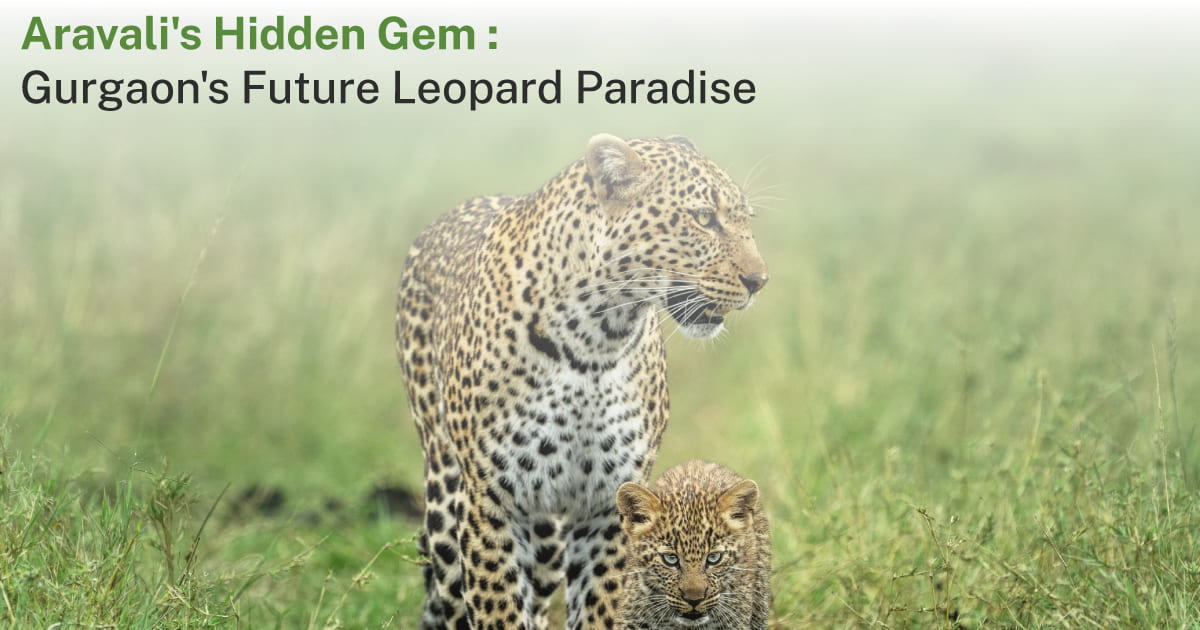
Aravali’s Hidden Gem: Gurgaon’s Future Leopard Paradise
The continuous urbanisation of the satellite towns of Delhi has also led to more focus on improving the ecological hotspots. In Gurgaon, this has led to taking steps to protect the most prominent natural heritage, the Aravalis.
Preserving Gurgaon’s Wildlife and the Aravalis:
A comprehensive conservation plan has been in the works for a 15km stretch of the Aravalis, stretching from Bandhwari (landfill) to Damdama Lake. The ambitious initiative is an exemplary joint effort involving the forest department, district administration, GMDA, and MCG.
The main objective is establishing a 15 Km jungle trail, a green corridor connecting two key points in the Aravalis. The endeavour was important as it will prevent private landowners from disregarding construction regulations, which have resulted in the lack of regulation for this ecologically sensitive region (including the Aravalis.)
Leopard Park in Behrampur: A Safe Haven for Leopards Away from Conflicts
One of the most intriguing aspects of this conservation project is the proposal to establish a leopard park in Behrampur village, designed along the lines of the Jhalana Leopard Safari Park in Jaipur which proved to be a major success.
It is important to note, that the conservation park is not just a tourist attraction but more importantly, it is a long-term solution to minimise human-leopard conflicts within Gurgaon. Over the years, many dangerous incidents have come up, including the lynching of a leopard in Mandawar in 2016, and gruesome hit-and-run accidents claiming the lives of 12 big cats in 15 years.
The establishment of the leopard park is a step toward creating a safe haven for these magnificent creatures whilst offering visitors a unique opportunity to observe them in their natural habitat. The significance of conserving the Aravalis and its wildlife is also connected with the broader context of urban development, where construction activities often collide upon these precious green spaces.
Facilitating better Living Conditions and
The proposed leopard conservation zone will not only provide a safe habitat for these big cats but also incorporate features like watering holes, solar pumps for water supply, camera traps, and native grasslands. This will ensure better living conditions in the areas nearby. There are plans to develop facilities such as a watchtower and an interpretation centre.
Preserving Biodiversity and Encouraging Sustainability
Additionally, just like in Jhalana, there is the possibility of a jungle safari which tourists can enjoy, providing regulated eco-tourism and wildlife awareness to the public. This approach also holds the power to engage the local community and provide employment opportunities. In the larger context, such conservation efforts highlight the need for balancing urban development and preserving natural spaces, ensuring that real estate development respects the boundaries set by nature.
In conclusion, the Leopard Paradise Project in Gurgaon is a significant step in the right direction, aimed at preserving the Aravalis and their precious wildlife, particularly leopards. As the city expands and real estate development continues, building up a harmonious balance between urbanisation and nature becomes increasingly vital, and projects like this serve as a beacon of hope for sustainable development.



